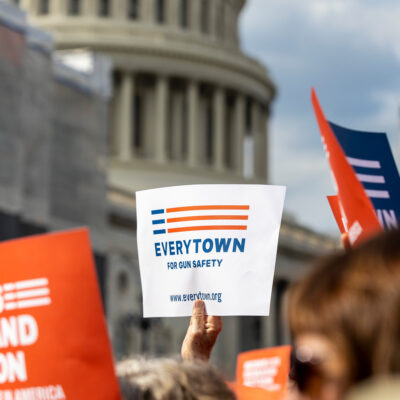New Study Shows Young Children Have Increase in Suicidal Thoughts
4.12.2021
Last week, NBC and Children’s Hospital Association released a new study detailing how suicidal thoughts of young children have continued to climb — even before the pandemic. During the pandemic, experts have raised the alarm about the heightened risk of suicide — citing the uptick in calls to suicide prevention hotlines, more young people having suicidal thoughts during the pandemic, and record gun sales.
According to the piece,
“The number of children ages 6-12 who visited children’s hospitals for suicidal thoughts or self-harm has more than doubled since 2016.
…
Now, mental health experts fear that the pandemic — which has increased anxiety and depression among adults and teenagers, and resulted in an estimated 37,300 children losing a parent to Covid-19 — could compound the issues young children face.”
Although the report does not specifically mention lethal means or firearms, research shows that firearm suicide for young people has continued to climb. In fact, according to a report released by Everytown Support Fund in September, the suicide rate among young people is at a near record high, increasing over 42% over the last decade, with increases nearly every year since 2007. And, firearm rates have increased most dramatically with young people of color. Young Asian and Pacific Islanders have seen a 71 percent increase over this period, and Latino youth have seen a 63 percent rise during the same period.
Following news of this research, here are resources to help frame ongoing reporting:
- To illuminate the links between firearm access and suicide and highlight approaches to prevention, Everytown for Gun Safety Support Fund released reports detailing the potential impact of coronavirus on gun suicide without action from policymakers and a first of its kind study tracking firearm suicide by congressional district.
- The January 2020 Surgeon General’s report on suicide prevention included recommendations to address gun suicide, such as:
- Storing firearms locked, unloaded, and separate from ammunition.
- Implementing extreme risk laws, which allow loved ones or law enforcement to intervene by petitioning a court for an order to temporarily prevent someone in crisis from accessing guns.
- During periods of crisis, temporarily storing firearms out of the home.
- Partnering with gun dealers and shooting ranges to promote and educate gun buyers on firearms safety and safe storage.
- Improving data collection about suicide deaths.
- Increasing the use of lethal means safety counseling and training health care providers, including nurses, social workers, case managers, and peer workers on lethal means safety counseling.
- Researching lethal means safety strategies and interventions, trusted messengers for suicide prevention, and culturally competent implementation of suicide interventions.
- Effectively implementing the new suicide prevention hotline 988 number.
Recommendations for Reporting on Suicide, which were developed by suicide prevention experts, international suicide prevention and public health organizations, schools of journalism, media organizations and key journalists as well as Internet safety experts. Their partners include, but are not limited to, American Foundation for Suicide Prevention, Suicide Awareness Voices of Education, American Association of Suicidology, and Suicide Prevention Resource Center.
If our organization can be a resource, do not hesitate to reach out. More information about gun suicide is available here, and the full list of recommendations on how to report on suicide is here.
If you are a survivor of gun suicide and gun violence, resources from the Everytown Survivor Network are available here. If you are struggling and need to talk, the National Suicide Prevention Lifeline is always open: 800-273-8255.




